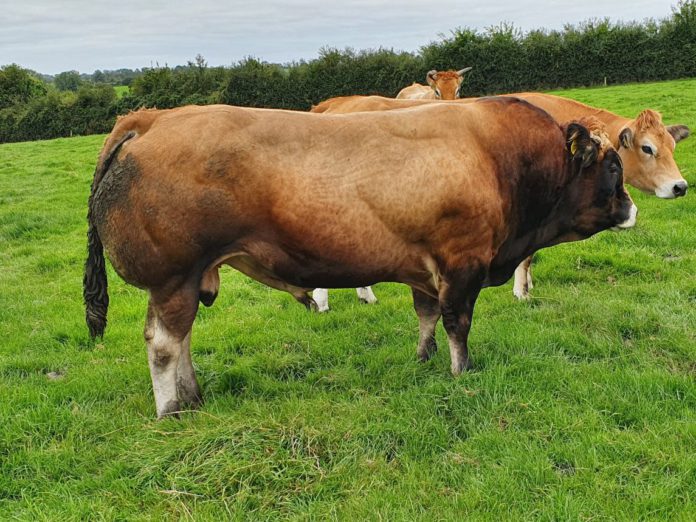Bull Fertility
Fertility of the stock bull is of “major” importance to both the size and timing of the subsequent calf crop, according to Teagasc’s Donegal-based agricultural advisor, Gary Fisher.
Infertility in bulls is not immediately recognisable in that symptoms/signs can take circa 2.5-3 months to show after insult.
Fisher has said that “very few” bulls, to the tune of circa 3-5%, fall into the infertile bracket, while a further 10-25% of bulls can be sub-fertile.
Moreover, it can take circa 70 days to produce sperm and a further two weeks to travel through the epididymis.
In many cases, it is only when scanning results yield a large volume of empty cows or the observation of the signs of oestrus in cows that should be circa 4-5 months in-calf that a potential bull fertility-related issue may flag.
Often on some enterprises, sub-fertile bulls go undetected until later in the breeding season, especially in a case where farmers do not strictly observe the herd or record data.
On these grounds, he advises farmers to “observe your stock bull the same way you observe your cows for AI”.
Causes of sub-fertility in bulls:
During a Teagasc Sligo Leitrim Donegal webinar on bull safety and fertility, he commented that a “sub-fertile bull is not what you want on a farm” before he went to discuss some of the potential causes as follows:
- Low libido;
- Sperm quality/quantity;
- Defects;
- Physical factors impacting bull mobility or mating ability.
Implications of a sub-fertile bull
However, he did stress that “a sub-fertile bull may be capable of getting some cows pregnant”.
With a sub-fertile bull, there are low pregnancy rates, an extended calving interval (cows could be calving from mid-February to mid-May, for example), reduced calf weaning weights (you are carrying cows for longer periods of time, and they are calving later than their usual windows) and higher involuntary levels of culling cows for barrenness.
“Sub-fertility in bulls is an issue, but it can be identified. Action is required early to prevent this from happening.”
In saying so, he stressed that “there is no guarantee that a bull will retain his fertility from season to season or even within a season”.
“Just because a bull put all your cows in-calf last year does not mean that he will do it this year.”
“Farmers need to be continually vigilant for potential fertility problems so that corrective action can be taken sooner rather than later,” he commented.
“Observe your cows morning and evening. Take a record of what cows are bulling and repeating. If you have a lot of repeats between 17-25 days after the last service, you have an issue.”
“At that stage, you may need to enlist your vet to do an examination of your stock bull,” he concluded.
Previous article on That’s Farming:
See more farming news on That’s Farming





